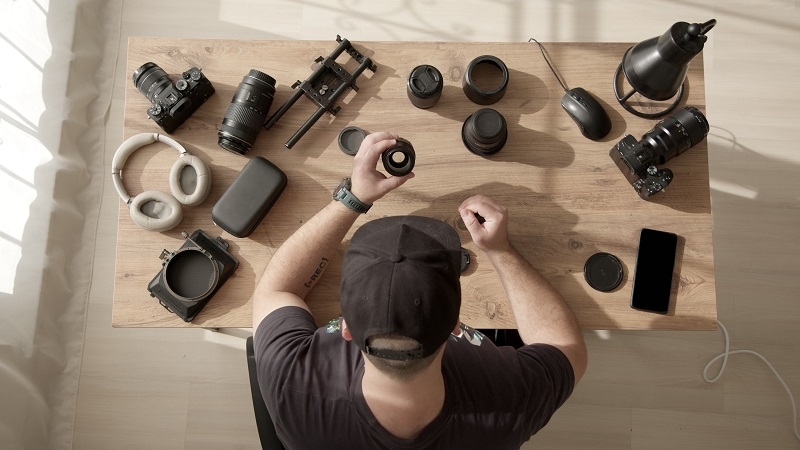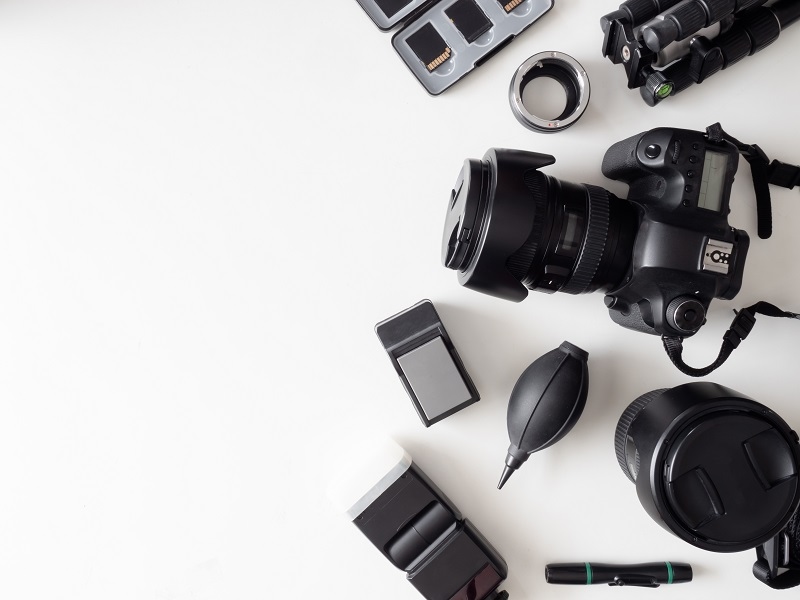
All photographers, skilled though they might be, must meet the need to capture beautiful pictures by equipping themselves with the right gear. Whether you are a beginner or even a pro, having the right gear can actually make a big difference in your work. This photography gear guide comprises 15 essential tools that prepare you for any shooting condition.
The items in this list range from a camera and lenses that are the basics of photography to items that will help you with organization and safety. Thus, you can concentrate on your creative work instead of worrying about whether you have all the necessary gear.
The Photography Gear Guide featuring the must-have tools is here for you:
A strong camera is the cornerstone of any photo gear. Based on your preference, the choice can be between DSLR, mirrorless, or compact cameras. It is a wise idea to purchase a camera that has a high-res sensor, is able to make pictures in low-light conditions and has an autofocus.
Since the camera is the device that actually makes your idea come true, it is paramount that you make a careful investment in a camera that fits your needs.
Just like with the camera, the lenses can change or influence the photography style of the person to a great extent. You should consider including the following:
Having a few must-have accessories, such as lens hoods and cleaning kits, always ready can keep your lenses in great working condition.
If you think about how to take your camera equipment and accessories, and you end up with the question, "Is it safe?" then you are just as concerned about safety as you are about the "how". Some of the basics of a camera bag are padded compartments, protection from the rain, and pockets that are easily accessible.
The well-organized bags not only avert the destruction of the equipment, keep lenses apart, but also make it easy to pick up quickly during the shoot.
Without rigidity and without the possibility of having full creative control over the situation, you will hardly get shots that look like they were done by a professional. Tripods and filters are the things that you can put to use to get this effect.
Tripods are great for longer exposures that can be done without the camera shaking; thus, they can be used for night shots or for photos taken at dusk or dawn. Using filters like polarizers and ND filters, you can fully control reflections and light intensity. Along with this, these tools give you more freedom to realize your creative ideas.
The worst thing that can happen to you during a photo session is to run out of battery. Make sure you have a number of batteries all of them fully charged and a charger that is reliable with you. When you have extra energy, you can take photos all day long regardless if you are working on location or are on a trip.
Photos mean nothing if they aren’t put in a safe place. Here are some memory card tips to help you accomplish this:
Having a memory plan is your insurance against lost shots, and it also enables you to have a smooth workflow, especially if you are on a long journey.

It is hard to imagine a situation where a portable flash would not be helpful, especially if it is a low-light scenario or indoor photography. The device gives the user the option of controlled lighting and lessens the intensity of the shadow areas.
Most new flashes come with the option of wireless functionality, which greatly increases the users’ freedom as no wires hinder the area and can be set up in a relaxed manner.
A small cleaning kit should be with you at all times if you want your gear to be always in perfect working order. Pack the kit with pieces of cloth made of microfiber, lens brushes, and sensor cleaning tools. The presence of dust and smudges can be the reason that the perfect shot will turn out to be a bad one; thus, maintenance in due time is a must.
Comfortable camera straps and harnesses are a photographer's best friend on long shoots. Not only do they spread the load of the camera evenly, but they also make sure your camera is safe. By buying ergonomic straps, photographers will be able to carry heavy combinations of gear without risking their health.
Reflectors and diffusers may sound like complicated things, but they actually make it easier to work with natural light. A reflector takes the light it gets from the sun and uses it to brighten the dark parts of a photo, whereas a diffuser softens a strong ray of light. These instruments can be used in any photography genre, such as portraits, studio, or outdoor photography, and are an absolute must.
One of the most important things for photographers is the backup of their work. An external hard drive is the place where all the photos you took can be safely stored and retrieved when needed. Organizing files by date or project will work in your favor when it comes to simplifying retrieval. You can always be sure of your work's safety even when your main device breaks down.
Travel photographers can only carry small, multi-functional, and lightweight equipment. Items for travel photographers are such things as foldable tripods, weatherproof backpacks, and multipurpose lenses. If you plan your equipment to be portable, then you are free to travel to new places without missing out on any moment.
By using a remote shutter release, it is possible to capture photos without the camera being touched, which results in a reduction in the blurriness caused by the lightest hand movement. This device is very helpful when long exposures, night shots, or self-portraits are to be taken.
Writing down the details of shooting, such as settings, locations, and light conditions, will significantly improve one's skills. Be it a real notebook or an app dedicated to photography, documenting your work will result in better planning and evaluation.
Mother Nature is not always favorable; thus, you should safeguard your camera essentials, such as camera bags with wallets for rain or padded cases. Even if it is just light rain or dust, sensitive electronics may suffer. Taking the right measures will ensure that you will be able to work anywhere and at any time.
Accessories are what separate a pro photographer from a beginner and what makes a good camera and lens set a killer one. Accessories such as filters, tripods, flashes, and cleaning kits are the ones that lead to more brilliant pictures. Accessories open up new creative possibilities and speed up the workflow without the need for costly upgrades to your main camera.
Among the photographers who are always on the go, the gear must be light and flexible. Equipment for travel photographers needs to be easily transferable, long-lasting, and versatile for different situations.
What you should focus on are multipurpose gadgets, small tripods, and weather-resistant bags. Also, there should be enough memory cards, and they should be well organized so that they can be easily accessed during trips.
One of the main reasons why a photographer is confident is due to his/her well-equippedness. This photography gear guide is essentially an outline of the 15 basic things that every shooter should consider. Each of the devices, whether it is the cameras and lenses or the portable flashes, the cleaning kits, and the camera bag essentials, plays a key role in helping you create high-quality images.
By combining the right setup with hard work and being organized, any photographer has the power to turn the most ordinary shots into breathtaking masterpieces.
This content was created by AI